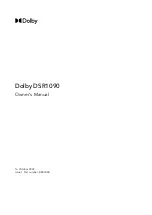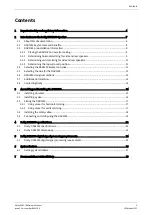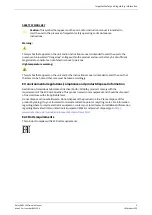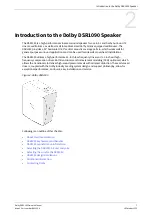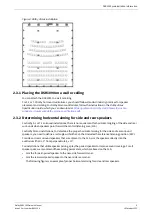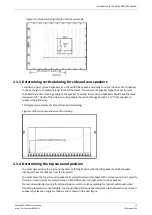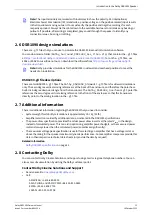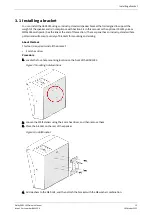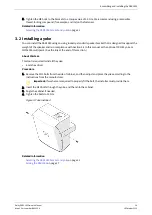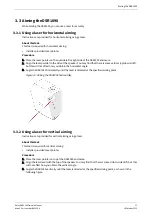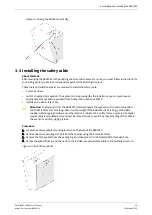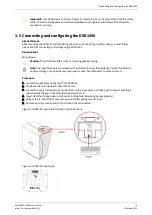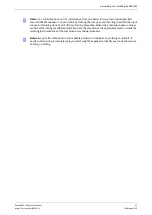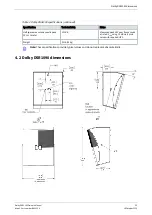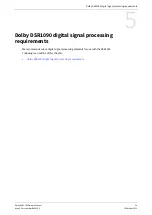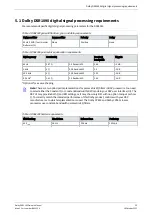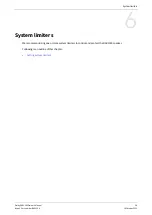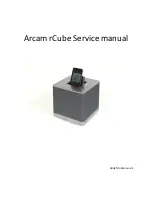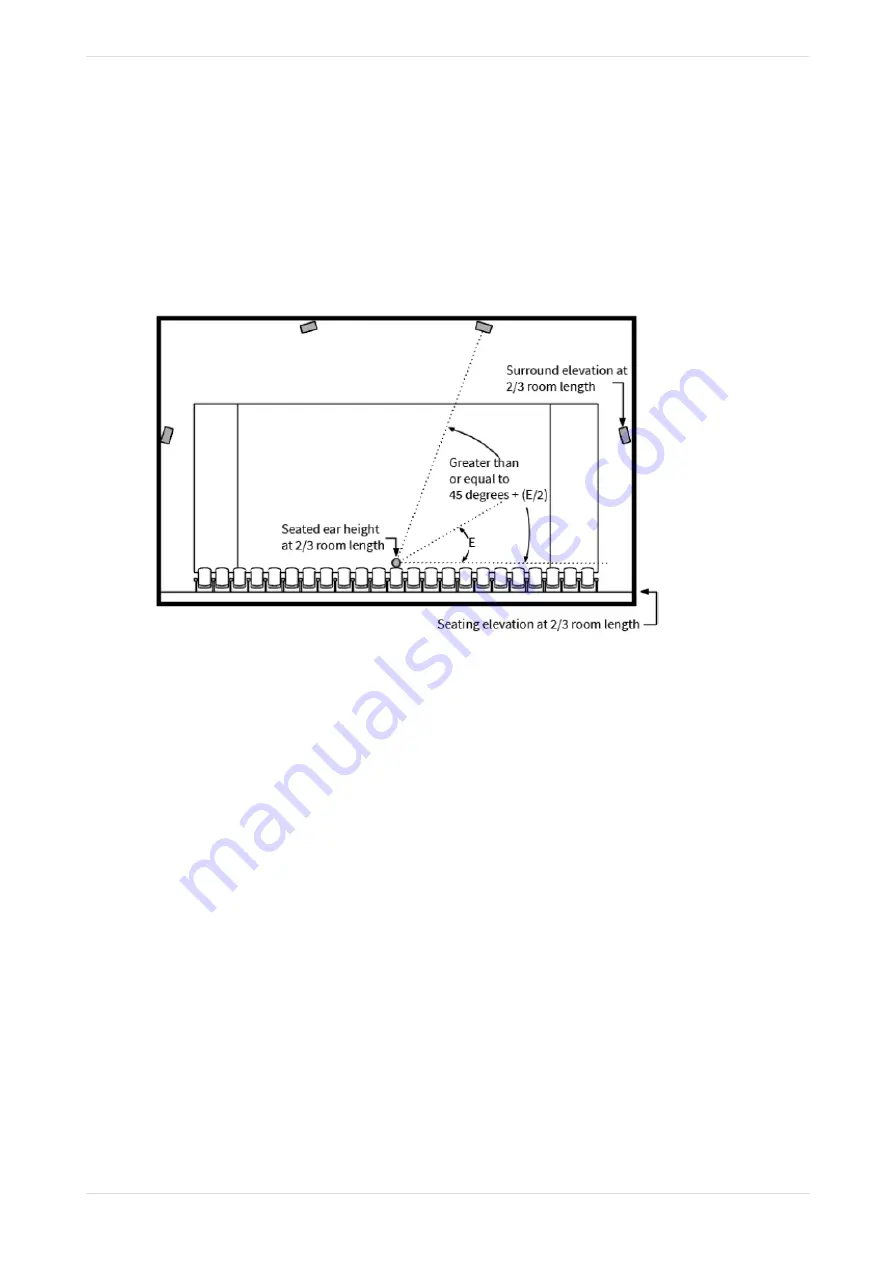
1. Let E be the elevation angle of the nearest side surround speaker measured from the reference listening
position (RLP).
2. The elevation angle of the corresponding top surround array should be greater than or equal to 45
degrees plus half of angle E. For example, if E is 20 degrees, then the elevation angle of the top surround
array should be greater than or equal to 55 degrees.
3. If there is no side surround speaker directly adjacent to the RLP or it is unclear which speaker to
reference, you can obtain angle E from the midpoint between two side surround speakers, a unit slightly
in front and a unit slightly behind the RLP. Likewise, for the top surround elevation angle, 45 d
E/2, you can use an interpolated point between two top surround speakers.
Figure 6: Determining top surround position
2.4 Selecting the DSR1090 bracket and yoke
Mounting brackets and yokes for the DSR1090 are sold separately (YK1090, MMA1090), or you can purchase
them from a party other than Dolby, such as Adaptive Technologies or MN Mounting Solutions. You should
choose a mounting bracket or yoke that meets the mounting requirements of the auditorium, allowing for
the required vertical and horizontal angle adjustment. The bracket or yoke must support the weight of the
DSR1090 (31 lb, or 14 kg) with at least a 5:1 safety factor.
Related information
on page 23
2.5 Selecting the wire for the DSR1090
It is important that you select the correct wire gauge for the DSR1090.
Typically, no more than 0.5 dB (or 11%) of power should be lost in the cabling. The DSR1090 input plates
accept an American Wire Gauge (AWG) of 18 AWG to 6 AWG (1 mm
2
to 16 mm
2
). When selecting the wire
gauge, you should always follow industry-standard practices, based on the rated impedance of the speaker
and the cable length.
For the DSR1090, we recommend a wire gauge of 16 AWG to 12 AWG (1.5 mm
2
to 4 mm
2
).
Selecting the DSR1090 bracket and yoke
Dolby DSR1090 Owner's Manual
11
Issue 1 Part number: 8800304
16 October 2022

